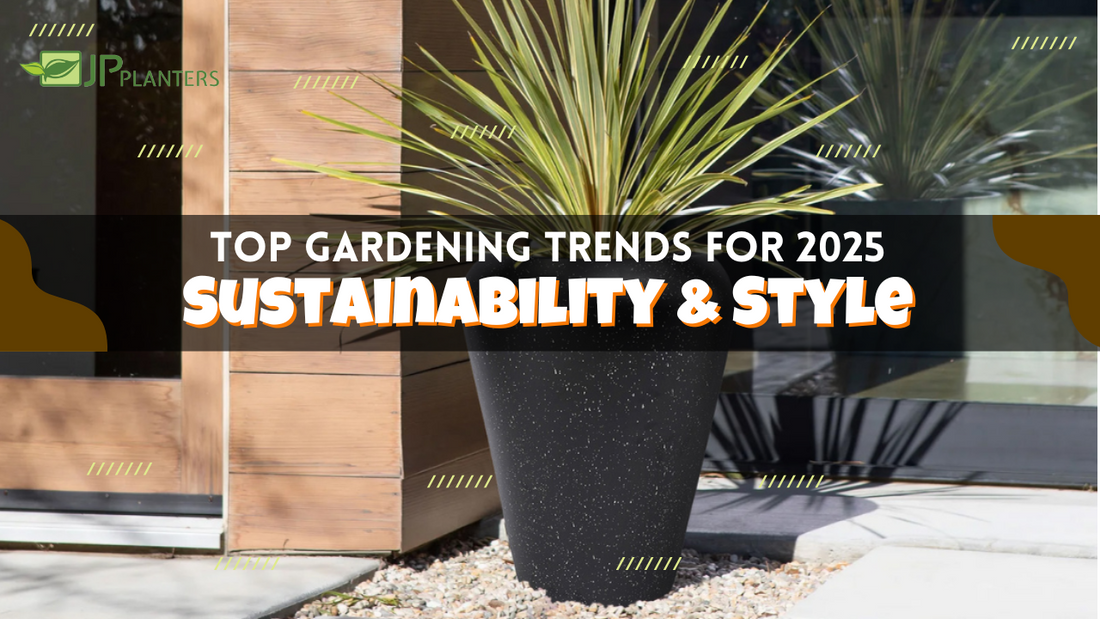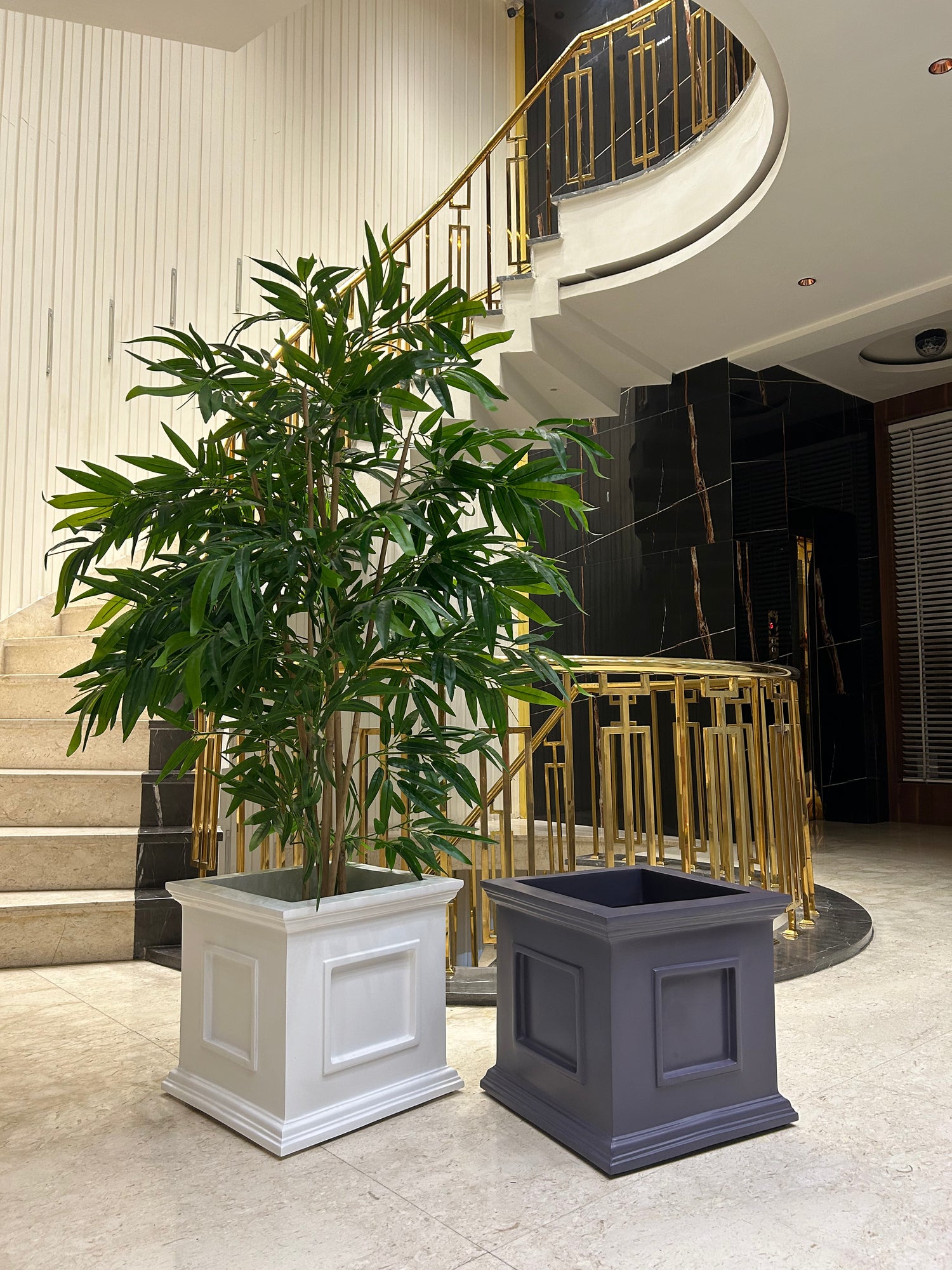
Top Gardening Trends for 2025: Sustainability & Style
Share
Gardening has always been an evolving practice, influenced by environmental concerns, technological advancements, and design aesthetics. As we step into 2025, the emphasis on sustainability and style in gardening has never been more significant. From eco-friendly materials to stylish, space-saving solutions, this year’s gardening trends reflect a perfect blend of functionality and beauty.
In this blog, we will explore the top gardening trends for 2025, covering sustainable gardening practices, modern planters, and the benefits of using a planter stand to enhance both plant health and garden aesthetics. We will also introduce the JP 4 Tier Planter Stand, a must-have for gardening enthusiasts looking for an organized and space-efficient solution.
1. Sustainable Gardening Practices
Sustainability is at the forefront of modern gardening trends, with eco-conscious gardeners looking for ways to minimize their environmental footprint. Here are some key sustainable gardening practices gaining popularity in 2025:
a. Water Conservation Techniques
Water-efficient gardening techniques are becoming essential, with drought-resistant plants, rainwater harvesting, and drip irrigation systems leading the way. Gardeners are using self-watering planters and moisture-retaining soil amendments to reduce water waste. Mulching is another method helping to retain soil moisture and reduce the need for frequent watering.
Additionally, many gardeners are investing in greywater recycling systems, which allow them to reuse household water for irrigation, further conserving this precious resource.
b. Organic and Regenerative Gardening
Chemical-free gardening is growing in popularity, with more people opting for organic fertilizers, composting, and permaculture techniques. Compost tea, natural pest repellents, and homemade bio-fertilizers are replacing synthetic chemicals, making gardens healthier and safer for both people and wildlife.
Regenerative gardening, which focuses on soil health, biodiversity, and carbon sequestration, is a key trend for eco-conscious gardeners. By planting cover crops, rotating crops, and incorporating no-till gardening techniques, gardeners are improving soil fertility while reducing their environmental impact.
c. Vertical Gardening and Urban Farming
With limited space in urban settings, vertical gardening solutions such as trellises, wall planters, and tiered plant stands are helping gardeners maximize their growing areas. Hydroponic and aquaponic systems are also becoming popular for growing fresh produce indoors, allowing even city dwellers to cultivate their own food with minimal space.
Living walls and green roofs are being incorporated into residential and commercial spaces, not only for aesthetics but also for their ability to improve air quality and reduce urban heat island effects.
2. Trendy Planter Materials for 2025
Choosing the right planter can significantly impact a garden's aesthetics and functionality. In 2025, stylish and durable planter materials are dominating gardening trends. Let’s explore some of the most popular options:
a. Plastic Planters
Plastic planters remain a popular choice due to their lightweight, affordability, and variety of colors and shapes. They are perfect for beginners and those looking for budget-friendly options. However, opting for recycled plastic planters supports sustainability by reducing plastic waste.
Advancements in biodegradable and eco-friendly plastics are also gaining traction, offering gardeners a more environmentally responsible alternative.
b. Concrete Planters
Concrete planters bring a modern, industrial look to gardens. They are highly durable and provide excellent insulation for plant roots, protecting them from extreme temperatures. Their heavy weight makes them ideal for windy areas or public spaces where stability is crucial.
Additionally, new lightweight concrete blends are being developed, maintaining durability while making handling and transportation easier.
c. Fiberglass Planters
Fiberglass planters are gaining popularity for their sleek, contemporary look and long-lasting durability. These planters are lightweight yet sturdy, making them suitable for both indoor and outdoor use. Their weather-resistant properties make them an excellent investment for long-term gardening.
Fiberglass planters are also resistant to UV rays, moisture, and temperature fluctuations, making them one of the most low-maintenance and stylish choices available.
d. Terracotta and Ceramic Planters
Terracotta and ceramic planters are timeless choices, known for their breathability, which helps regulate soil moisture. Their classic appeal makes them ideal for Mediterranean and rustic garden styles.
However, because they can be fragile and susceptible to cracking in extreme weather conditions, many gardeners are opting for high-fired ceramic or glazed terracotta, which offer additional durability.
e. Wooden Planters
For a more natural and rustic aesthetic, wooden planters made from sustainable sources like bamboo or reclaimed wood are excellent choices. They blend well with garden landscapes and work well for raised bed gardening.
To increase longevity, these planters can be treated with natural wood preservatives, such as linseed oil, to protect against moisture and decay.
3. The Role of Planter Stands in Gardening
Using a planter stand is a game-changer in modern gardening. Not only do they add style and organization to your garden, but they also provide several benefits for plant health and maintenance.
Benefits of Using a Planter Stand
- Improved Air Circulation – Elevating plants helps improve airflow around the pots, reducing the risk of root rot and fungal infections.
- Enhanced Aesthetic Appeal – Planter stands add an elegant touch to gardens, patios, and balconies, creating visually appealing plant displays.
- Better Drainage – Raising pots off the ground prevents waterlogging, which is crucial for plant health.
- Space Optimization – Tiered planter stands allow multiple plants to be arranged vertically, making them perfect for small spaces.
- Easy Maintenance – Elevating plants reduces bending and kneeling, making watering and pruning easier.
4. Introducing the JP 4 Tier Planter Stand
The JP 4 Tier Planter Stand is an innovative and stylish solution for urban gardeners and plant lovers. This multi-tier stand provides ample space for displaying multiple plants while maximizing floor space.
Key Features:
- Space-Saving Design – Ideal for balconies, patios, and small gardens.
- Durable Construction – Made from high-quality metal with a rust-resistant coating.
- Elegant Aesthetic – The sleek and modern design complements any garden setting.
- Stable & Sturdy – Designed to hold multiple planters securely without tipping over.
- Multi-Functional Use – Can be used indoors or outdoors for herbs, flowers, and decorative plants.
Conclusion: Elevate Your Garden with Sustainability and Style
As we embrace 2025, gardening trends are steering toward sustainability, functionality, and stylish aesthetics. Choosing the right planter material, incorporating a planter stand, and adopting sustainable gardening practices will not only enhance your garden’s appearance but also contribute to a healthier environment.
The JP 4 Tier Planter Stand is an excellent investment for gardeners looking to optimize space while creating a beautiful plant display. Whether you prefer fiberglass, concrete, or plastic planters, ensuring that your plants have a stable, breathable, and well-organized home will lead to healthier growth and a stunning garden setup.
Stay ahead of the trends and elevate your gardening experience with sustainability and style in mind!




